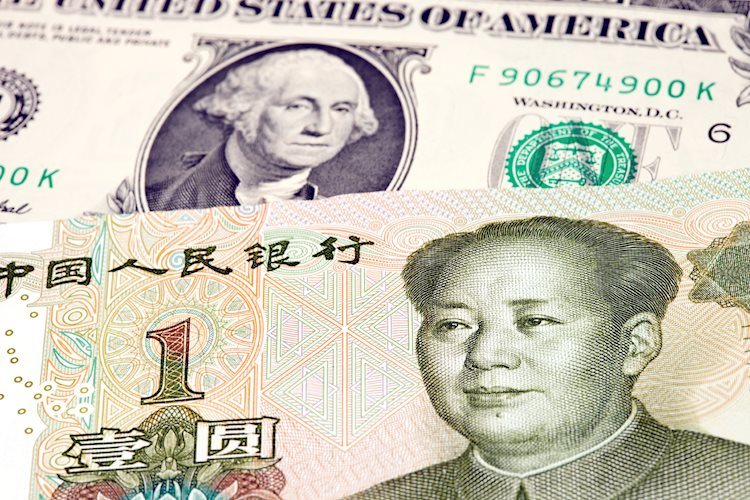China is one of the world’s largest economies and its currency, the yuan, is an important factor in the global financial market. The Chinese government has strict control over the yuan’s exchange rate on the mainland, with the central bank, the People’s Bank of China (PBOC), setting a daily midpoint fix for it. This daily fix is based on the yuan’s previous day’s closing level and quotations from inter-bank dealers. In recent trading, the PBOC set the yuan at 6.8374 versus the prior close of 6.8286.
The onshore yuan, denoted as CNY, is different from the offshore yuan, known as CNH, in trading restrictions. The offshore yuan is traded outside the mainland and is not subject to the same tight controls as the onshore yuan. As a result, the two yuan’s exchange rates can differ, with the offshore rate usually trading stronger than the onshore rate.
China’s strict control of the yuan’s exchange rate has been a subject of controversy globally. Critics argue that the country’s policies are unfair and distort the market. They allege that China deliberately undervalues its currency to give its exports an advantage by making them cheaper for foreign buyers. This policy has been criticized by its trading partners, particularly the United States.
In response, China has argued that it is simply trying to maintain stability in its financial system, particularly in the wake of the country’s economic growth over the last few decades. China has been a major engine of global growth, and a sudden shift in its economic trajectory could have far-reaching implications for the global economy.
In recent years, the Chinese government has taken steps to liberalize the yuan’s exchange rate. In 2015, it allowed the yuan to be included in the International Monetary Fund’s basket of reserve currencies, alongside the US dollar, euro, Japanese yen and the British pound. The move was seen as a sign of China’s growing economic influence and its willingness to take steps to integrate with the global financial system.
The Chinese government also introduced a new currency trading band in 2016, allowing the yuan to fluctuate by up to 2% from the midpoint fix. The move was hailed as an important step towards a more market-based exchange rate mechanism.
Despite these changes, the Chinese government continues to maintain a degree of control over the yuan’s exchange rate. The government’s policy of strict control over the yuan is driven by a number of factors, including a desire to maintain financial stability, limit the impact of external shocks, and protect the country’s exporters.
Critics argue that China’s policies have led to an imbalanced global trading system, with China’s exports enjoying an unfair advantage. They argue that China must do more to liberalize its currency and open its markets to foreign competition.
China, however, remains cautious about moving too quickly towards liberalization, given the risks and uncertainties involved. The country’s leaders are acutely aware of the lessons from the Asian financial crisis of the late 1990s, which was triggered in part by the sudden devaluation of the Thai baht.
As such, China is likely to continue to tread carefully as it moves towards a more liberalized currency regime. It is likely to seek to balance the need for financial stability with the desire to open up its economy to the world.
In conclusion, China’s strict control of the yuan’s exchange rate has been a source of controversy globally. While the Chinese government argues that it is simply trying to maintain stability in its financial system, critics argue that its policies are unfair and distort the market. Despite some moves towards liberalization in recent years, China is likely to continue to tread carefully as it balances the need for financial stability with the desire to open up its economy to the world.


